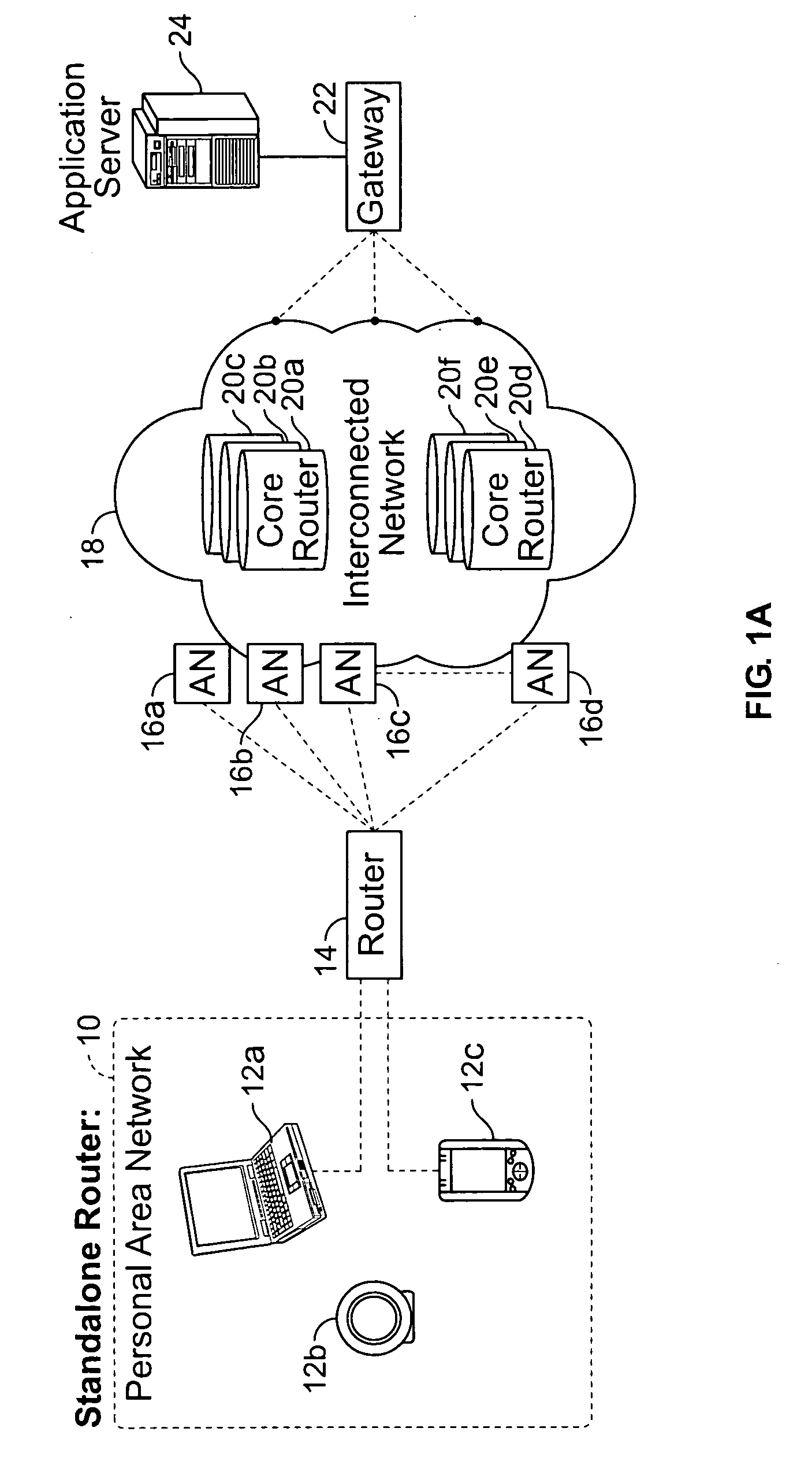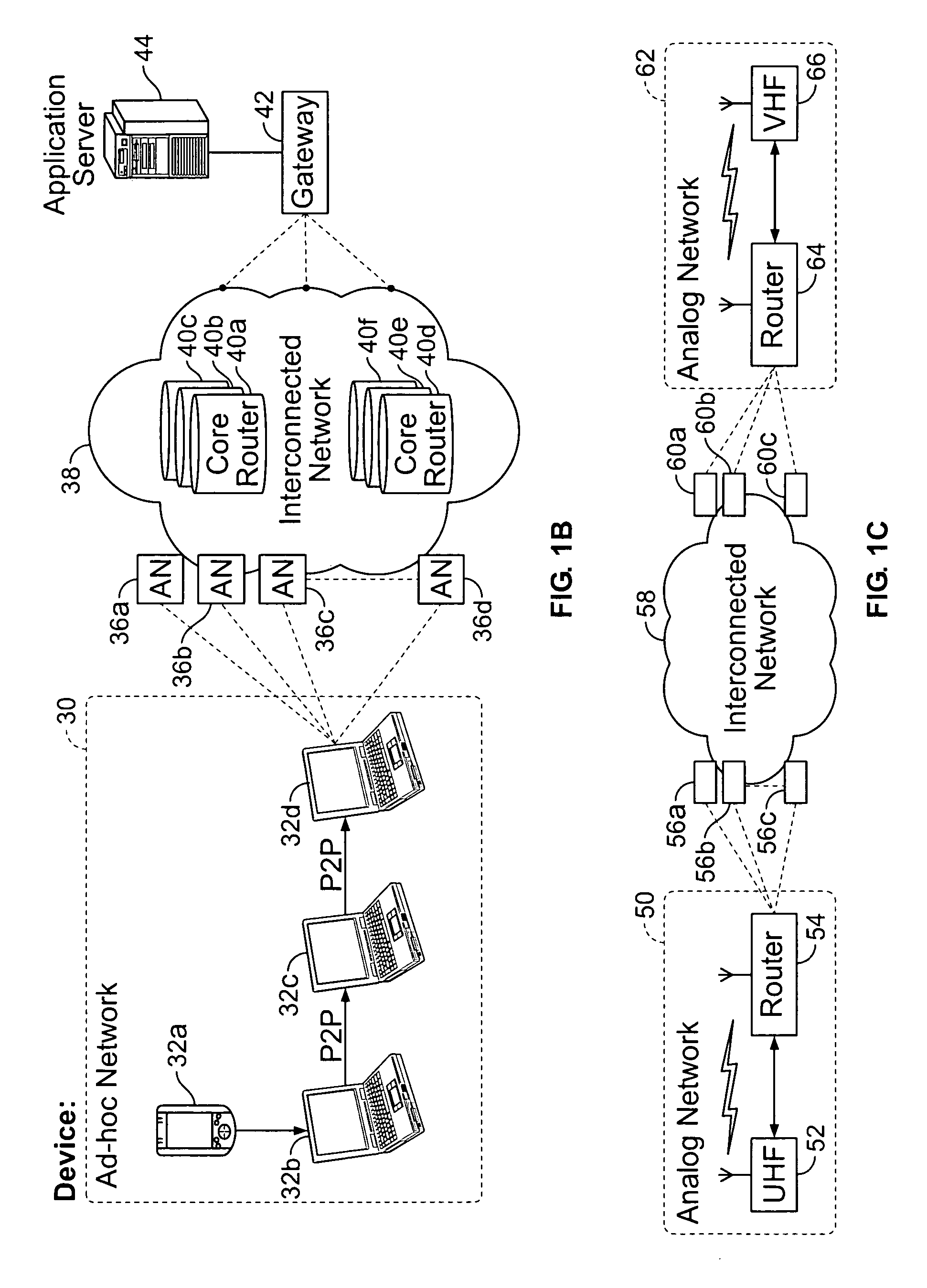Multi-access terminal with capability for simultaneous connectivity to multiple communication channels
a terminal and communication channel technology, applied in the field of multi-access terminals, can solve the problems of limited bandwidth and range of wireless network users, limited resources of available resources such as spectrum, bandwidth, latency, energy,
- Summary
- Abstract
- Description
- Claims
- Application Information
AI Technical Summary
Benefits of technology
Problems solved by technology
Method used
Image
Examples
Embodiment Construction
[0024] Described in overview form, the present invention relates to a communications system that provides service to wireless communications units (such units being referred to as “multi-access” terminals), and more specifically, to users operating such units. More particularly, the present invention allows for simultaneous communications over a range of various different (heterogeneous) access networks, in a manner that provides optimal characteristics for the specific requirements and time criticalities of applications and services. The present invention represents a shift from a pure, end-to-end communications (infrastructure-centric) model, as in today's telephone network, to a client-centric, application-aware network model (similar to the Internet), so as to allow the client to dynamically adapt and react to network conditions, user mobility, and context. Unlike the infrastructure-centric model, where users simply use the network as a communication medium to the extent of its ...
PUM
 Login to View More
Login to View More Abstract
Description
Claims
Application Information
 Login to View More
Login to View More - R&D
- Intellectual Property
- Life Sciences
- Materials
- Tech Scout
- Unparalleled Data Quality
- Higher Quality Content
- 60% Fewer Hallucinations
Browse by: Latest US Patents, China's latest patents, Technical Efficacy Thesaurus, Application Domain, Technology Topic, Popular Technical Reports.
© 2025 PatSnap. All rights reserved.Legal|Privacy policy|Modern Slavery Act Transparency Statement|Sitemap|About US| Contact US: help@patsnap.com



